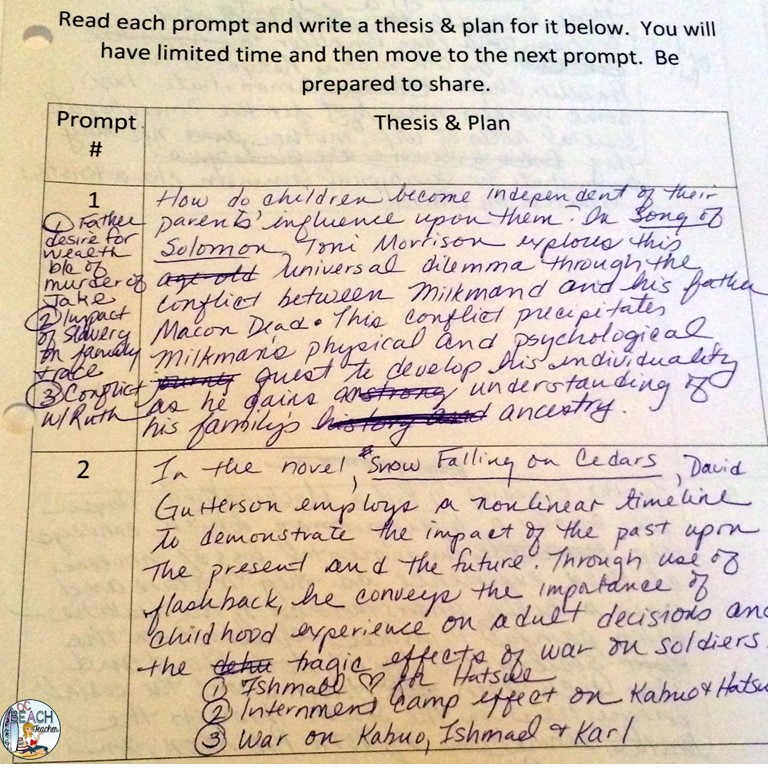The classic American author Flannery O’Connor once said, “I write because I don’t know what I think until I read what I say.” I relate to the sentiment in this quote and think many of my high school students can understand it, too. However, I’ve often found that they expect words to come easily to great writers. Of course, successful writers will often tell their readers that, in fact, writing is a challenging process that takes time, effort, and revision.
One way teachers can help students understand the process is to write with them and model their own writing. In his article “Becoming Your Own Expert- Teachers as Writers,” Tim Gillespie from the National Writing Project reinforces this saying, “When teachers write, we provide a positive model
for our students. Our example says we value writing and find it useful, more so than when we sit and correct papers while the students write.” No doubt, this is easier said than done. When my students are busy writing, I’m often distracted with other responsibilities.
Additionally, I feel anxious showing my writing to my students because I have my own insecurities, especially when I’m working with my Advanced Placement English Literature and Composition students. And as I’ve often told my students, I am more of a “rewriter” than writer, which makes timed writing especially challenging for me. Nevertheless, I write with them and show them my writing, flaws and all.
Here are two recent lessons where I modeled my writing:
Speed Carousel Writing
In preparation for the AP Literature Exam, I created timed carousel activities with several Q3 prompts from this College Board website. This activity was inspired by the speed dating activity described by Jori Krulder during #APLitTwitterchat.
I posted these prompts around the classroom to encourage students to get out of their seats. As they rotated around the room in six-minute timed sessions, I asked my students to plan a response for each prompt, including writing their thesis statements. In addition to exposing them to AP Literature Exam retired prompts, this exercise gave them practice with quick thinking. Furthermore, it emphasized the importance of taking several minutes to plan their ideas before plunging into their essay writing. This was reinforced in the APLitHelp.com Reminders from AP Readers blog post. With five prompts, this activity took just over 30 minutes. And by participating with them, I know firsthand how challenging the task was to complete.
Next, I collected the students’ papers, and because I have a small class, I copied all of our responses, including my own. The following day I handed these packets to students and we sat in a circle to give one another feedback. To keep our peer review simple and effective, I borrowed a strategy from Susan Barber that uses “one glow, grow, and question” comment for each response. I encouraged them to remark on my writing, too. Afterwards, students said this was one of the best writing lessons they had completed during the semester.
 |
| I modeled my my messy writing for the timed prompt. |
Using Google Drive
For an end of the year project, my students wrote argumentative letters to advocate for accelerated English classes in our school. After having taken mainstreamed English courses for their earlier high school requirements, my AP Literature students always remark that they are surprised by the rigor and pace when they enter my class. While our teachers certainly try to meet all of our students’ needs in the heterogenous English classes, sometimes our ablest students get “left behind.” Certainly, they lack the background reading that would put them in the best position for success in AP Literature.
When I gave the letter writing assignment, I wrongly assumed that they would know how to write a business letter with the purpose of making an argument. Although we had worked intensely on literary analysis writing, they had limited experience with the different format and purpose of a letter. Consequently, I decided to model my own process as I wrote a letter to our Assistant Superintendent and posted my writing in Google Drive.
They watched me research evidence from scholarly articles, brainstorm with a bulleted list, and continually revise my writing until I had my final paragraphs. They also uploaded their letters to Google Drive and when I asked them to complete peer review with each other’s letters, I invited them to make comments on my letter.
 |
| Here is an example of our peer review process on Google Drive. |
With my modeling, I saw their letter writing improve drastically. Originally, their letters made frequent generalizations and vague statements about their past experiences in English classes. As they revised and gave one another feedback, they began to develop specific anecdotes and they improve the tone and word choice in their writing. By the end of the process, we had written six polished letters that we mailed to assorted school officials.
No doubt, effective English teachers know that teaching writing is different than simply assigning writing. Modeling is important – whether it’s with our own writing, student anchor essays, or writing from professional writers. Do you model your writing in class? If so, what strategies do you use?
Please share in the comments below.





